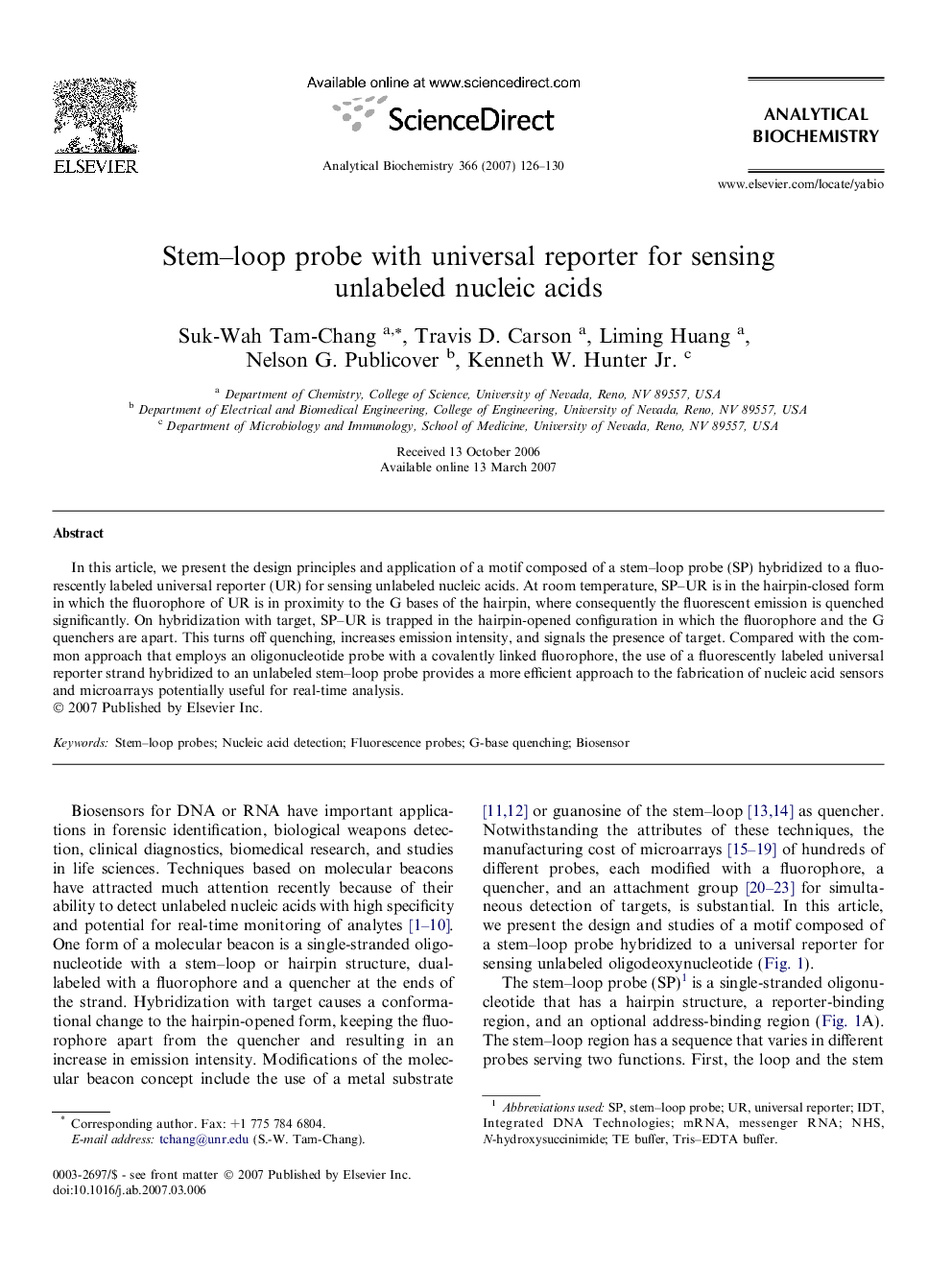| Article ID | Journal | Published Year | Pages | File Type |
|---|---|---|---|---|
| 1175941 | Analytical Biochemistry | 2007 | 5 Pages |
Abstract
In this article, we present the design principles and application of a motif composed of a stem-loop probe (SP) hybridized to a fluorescently labeled universal reporter (UR) for sensing unlabeled nucleic acids. At room temperature, SP-UR is in the hairpin-closed form in which the fluorophore of UR is in proximity to the G bases of the hairpin, where consequently the fluorescent emission is quenched significantly. On hybridization with target, SP-UR is trapped in the hairpin-opened configuration in which the fluorophore and the G quenchers are apart. This turns off quenching, increases emission intensity, and signals the presence of target. Compared with the common approach that employs an oligonucleotide probe with a covalently linked fluorophore, the use of a fluorescently labeled universal reporter strand hybridized to an unlabeled stem-loop probe provides a more efficient approach to the fabrication of nucleic acid sensors and microarrays potentially useful for real-time analysis.
Related Topics
Physical Sciences and Engineering
Chemistry
Analytical Chemistry
Authors
Suk-Wah Tam-Chang, Travis D. Carson, Liming Huang, Nelson G. Publicover, Kenneth W. Jr.,
